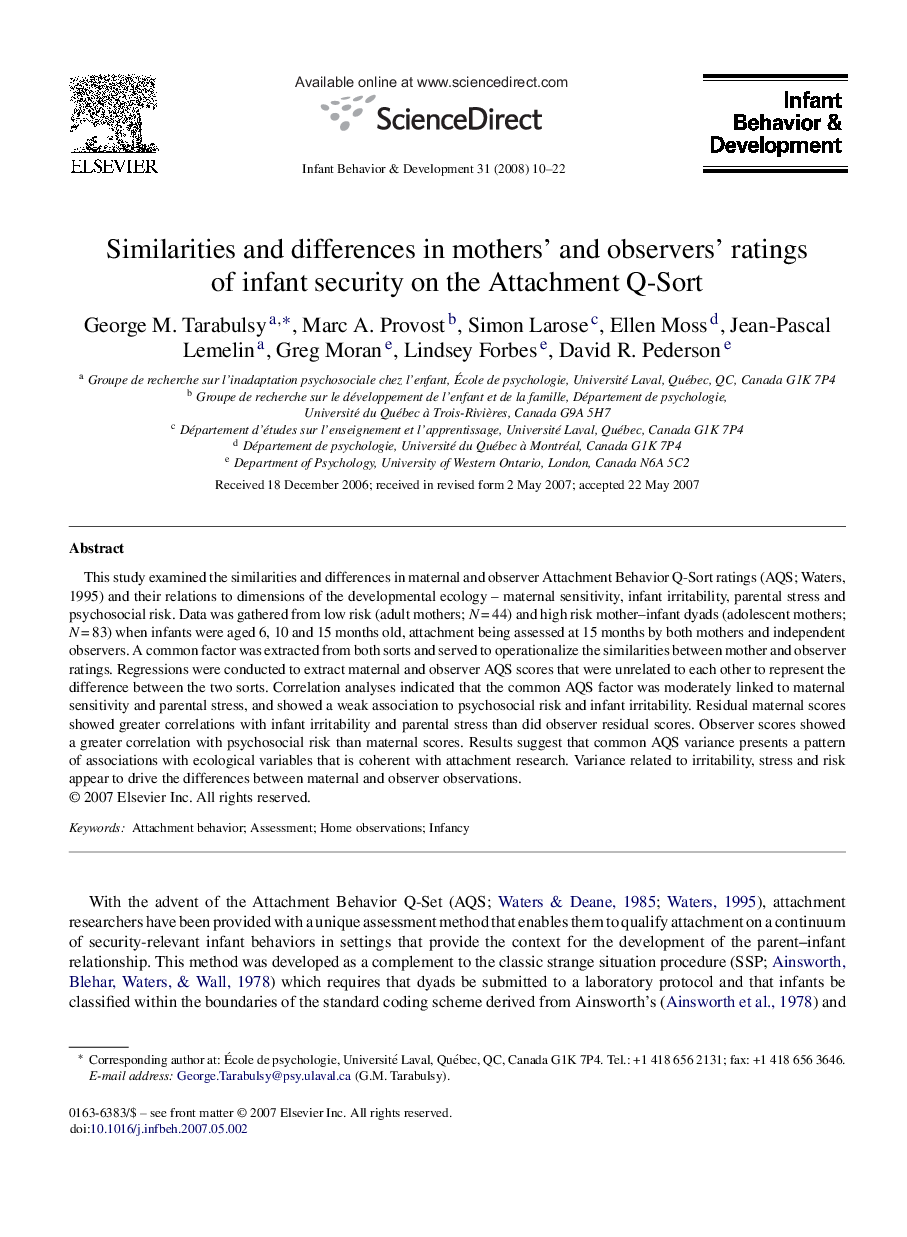| Article ID | Journal | Published Year | Pages | File Type |
|---|---|---|---|---|
| 917538 | Infant Behavior and Development | 2008 | 13 Pages |
This study examined the similarities and differences in maternal and observer Attachment Behavior Q-Sort ratings (AQS; Waters, 1995) and their relations to dimensions of the developmental ecology – maternal sensitivity, infant irritability, parental stress and psychosocial risk. Data was gathered from low risk (adult mothers; N = 44) and high risk mother–infant dyads (adolescent mothers; N = 83) when infants were aged 6, 10 and 15 months old, attachment being assessed at 15 months by both mothers and independent observers. A common factor was extracted from both sorts and served to operationalize the similarities between mother and observer ratings. Regressions were conducted to extract maternal and observer AQS scores that were unrelated to each other to represent the difference between the two sorts. Correlation analyses indicated that the common AQS factor was moderately linked to maternal sensitivity and parental stress, and showed a weak association to psychosocial risk and infant irritability. Residual maternal scores showed greater correlations with infant irritability and parental stress than did observer residual scores. Observer scores showed a greater correlation with psychosocial risk than maternal scores. Results suggest that common AQS variance presents a pattern of associations with ecological variables that is coherent with attachment research. Variance related to irritability, stress and risk appear to drive the differences between maternal and observer observations.
